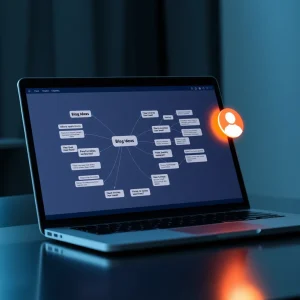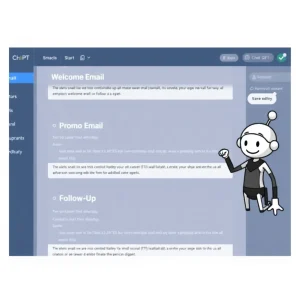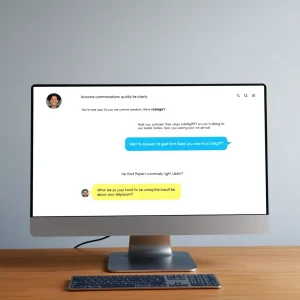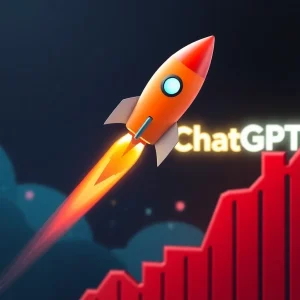ChatGPT for Online Business Productivity
Revolutionize Your Workflow with 5 Hacks You Need Now

Imagine you’re sipping your coffee, yawning over your to‑do list, wondering how on earth you’ll jack up productivity without burning out. What if I told you that ChatGPT could become your secret weapon, your silent partner in crime, helping you blitz through content, emails, copy, customer replies, and audience insight? That’s exactly what “ChatGPT for online business productivity” is all about.
Let’s roll up our sleeves. Here are five super‑practical ways to use ChatGPT to speed up your online business, and a little extra in each section to make you feel like a productivity magician.
1. Generate Content Ideas and Outlines with ChatGPT for Online Business Productivity
You know that moment where you stare at the blank screen and your brain is on strike? ChatGPT can bust that wall down. Use it to spit out blog post ideas, video scripts, newsletter topics, whatever content your biz runs on.
Here’s how: start with a prompt like “Write 10 blog titles for newbie email marketers”. Then pick the ones you like and ask: “Turn this title into a full outline with section headers.” Boom, you’ve got the skeletal frame of your next masterpiece without sweating over it.
Extra tip: ask ChatGPT for content clusters or topic maps. For example, “Create 5 subtopics around ‘email funnels’ with supporting blog angles, video ideas, and FAQ headings.” That helps you structure your content library and feed your SEO engine.
Action steps:

Use a prompt like: “Give me 7 content ideas for a coach teaching Instagram growth.”
Take your favorite and ask: “Give me a long-form blog outline with 5 sections, key talking points, and a call to action.”
Copy that skeleton into your doc, then expand by adding case studies, personal stories, stats, etc.
By doing this, ChatGPT becomes your creative sidekick for ChatGPT marketing automation, freeing you from idea-block overload.
2. Craft High-Converting Email Sequences Fast
Blank screen paralysis hits hardest when you're writing emails that need to sell. Instead of wrestling with subject lines, structure, and persuasive flow, ask ChatGPT to draft your entire sequence (welcome, nurture, promo) based on your goal and audience.
Here’s how you do it:
Give it the core product, result, niche, and audience, e.g. “I offer a mini‑course for new coaches on client outreach; write a 3‑email nurture sequence that warms leads and leads them to apply.”
Ask it to generate subject lines + email copy + transition lines between each email.
Review, adjust tone, insert your own anecdotes or examples, then schedule.
You’re not giving away the store, you’re getting scaffolding. You still add your unique voice. But you sidestep the blank page and speed into action.
Pro tip: once ChatGPT writes an email, ask for three alternative opens or three alternate CTAs so you can A/B test. That’s using ChatGPT hacks for entrepreneurs, squeezing more mileage out of one prompt.

Action steps:
Feed ChatGPT: your offer, your audience’s problem, and your desired outcome.
Ask: “Provide 3 subject lines, 3 version options of each email, and include transition copy.”
Pick your favorite, tweak it, personalize it, and send.
This is one of the strongest productivity levers. You go from zero to polished sequence faster than you thought possible.
3. Write Landing Page or Ad Copy Lightning Fast
Copywriting is something many dread. Headlines, bullets, sub‑heads, opening hooks, it’s a lot. Use ChatGPT to generate multiple versions in seconds. Then cherry-pick, refine, and test.
Tell ChatGPT:
Who your audience is,
What problem you're fixing,
The results you deliver.
Prompt: “Write 5 variations of a landing page headline + subheading + three bullet points for new coaches wanting to land high‑paying clients.” Let it spit back options. Then you choose, tweak, test.
You can also ask for angle swaps: “Rewrite these bullets from a fear angle,” “Rewrite from a desire angle,” “Rewrite to highlight speed or ease.”
Pro tip: ask ChatGPT to generate objection-handling bullets. For example: “People often worry about wasting money or time, write 2 bullet points addressing that objection.” Then you drop those into the page or ad. That aligns with ChatGPT marketing automation and ChatGPT business productivity tips.
Action steps:
List three outcomes your offer guarantees.
Tell ChatGPT: “Generate 4 headlines, subheads, and bullet sets for each outcome.”
Optionally ask it: “Convert each into an ad copy version (for Facebook, Google).”
You’ll suddenly have a swipe file of ad + page copy ready to plug in and test.
4. Create Chatbot Responses or FAQ Content in a Snap
If you’re writing FAQs from scratch or mapping chatbot flows, ChatGPT is like your personal info architect. You feed it your top support questions, and it drafts clear, friendly, concise responses you can drop in instantly.
For example:
You: “Here are five frequent support questions (refunds, shipping, setup). Draft short, helpful responses in brand voice.”
It gives you answers. You polish as needed.
You can also feed it transcripts of past support tickets and ask: “Based on these, what are 10 new FAQ questions and answers?” That uncovers gaps you hadn’t thought of. Use that in your help center or chatbot logic.
Bonus: ask for tone variants, one version formal, one casual, one friendly. Use whichever fits the situation (automated or human). You’re turning ChatGPT into your ChatGPT business productivity tips engine.

Action steps:
Identify 3–5 top support questions.
Prompt ChatGPT: “Write your best short answer for each, friendly but precise.”
Optionally ask: “Give me 3 tone variations for each reply (professional, warm, playful).”
After doing this, your support area becomes cleaner, leaner, and less manual.
5. Understand Your Audience with Prompted Research
Here’s where psychology meets productivity. Ask ChatGPT to simulate your audience, their fears, desires, language, objections. Use prompts like:
“What worries do new coaches feel when launching their first paid offer?”
“List five objections someone might have before buying a coaching program.”
“What dreams do aspiring entrepreneurs have, even if they don’t say them?”
These responses can spark messaging ideas, content hooks, benefit wording, and empathy that really resonates. You use this to steer your headlines, emails, landing page copy, and even future product ideas.
Then you can feed those insights back into ChatGPT to sharpen your copy: “Now rewrite that headline to trigger emotion based on these fears.”
Action steps:
Ask ChatGPT: “Provide 10 pain points, 10 dreams, and 5 objections for [your niche].”
Use those in your copy, content angles, social hooks.
Recycle these into prompts: “Write 3 headlines targeting these fear points,” or “Rewrite my sales email emphasizing these dreams.”
This turns ChatGPT into your audience whisperer, helping you craft messaging that lands hard with your people.
Combining These Hacks with “Internet Profit Success”

Let’s talk about weaving in an additional keyword “Internet Profit Success.” That phrase frames your work in a broader vision. Yes, we’re using ChatGPT to speed things, but the larger goal is profit, sustainability, and scaling. In your content, you’d say:
“When you combine these ChatGPT hacks for entrepreneurs with sound strategy, you’re not just getting faster, you’re nudging your business into Internet Profit Success territory.”
So in your blog, you might have a section like:
“From Productivity to Profit: How ChatGPT Fuels Internet Profit Success”
And then talk about how speed + quality + consistency create the conditions where revenue grows without burning out.
You could also tie in how automated workflows allow you to multiply your efforts, reach more people, and convert more, which all contribute to long-term profitability.
Putting It All Together, Structure + Flow
Here’s a suggested high-level structure for your piece:
Introduction: Why speeding up is essential (tie into “your key phrase”)
Section 1: Generate Content Ideas & Outlines (with examples)
Section 2: High-Converting Email Sequences
Section 3: Landing Page & Ad Copy
Section 4: Chatbot / FAQ Content
Section 5: Audience Research & Insights
Bonus: Profit mindset + combining speed with strategy (Internet Profit Success)
Tips for prompt mastery + avoiding over-reliance
Final thoughts + call to experiment
Sprinkle your main keyword in headings and in body (but avoid awkward stuffing). Use the related phrases in subheads and variations. Use transition words and short paragraphs for readability.
Also throw in mini stories, examples, or humorous aside (like “I once made ChatGPT spit out ten blog ideas while I took a bathroom break”) to keep tone light.
For more information on running your online business watch these 5 FREE VIDEOS
